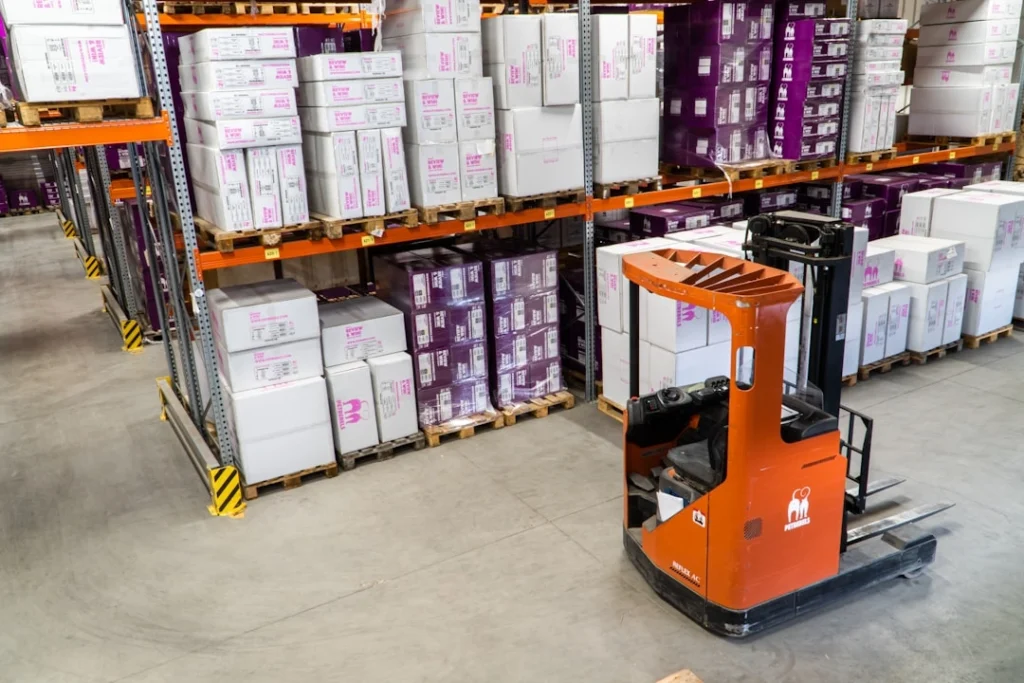In a nutshell:
- AI forecasting enhances capacity for demand and allows businesses to stay ahead with accurate predictions, generated rapidly.
- It optimizes inventory and resource allocation, reducing wastage and improving overall efficiency.
- AI forecasting contributes to improved customer satisfaction by ensuring sufficient stock availability.
- It facilitates better strategic planning and efficient workforce management.
- Businesses can enjoy significant cost savings by accurately predicting consumer demand and minimizing operational costs.
Not all heroes wear capes. Some of them are just really good at AI forecasting.
In your business, knowing what's coming down the road is critical in today's fast-changing environment. Enter artificial intelligence (AI), the game-changer in industries far and wide. AI algorithms and machine learning can turn your messy masses of data into accurate predictions of future consumer demand.
When every decision counts, AI forecasting emerges as a beacon of insight, guiding businesses to optimize inventory, allocate resources wisely, and navigate the turbulent seas of expected revenue.
AI forecasting isn't just a tool; it's the compass in the storm of uncertainty. Heroic indeed.
Let’s explore the importance of AI in modern forecasting and its role in improving business efficiency, along with how business leaders can overcome challenges in adopting AI forecasting.
-

- Photo by Susan Wilkinson on Unsplash
The Benefits of AI Forecasting for Efficiency
AI forecasting is a field of artificial intelligence that uses time series data to estimate future developments in various industries, such as retail, sales, healthcare, financial services, and manufacturing.
AI forecasting offers countless benefits for improving business efficiency, and the list continues to grow as technologies improve.
Enhanced Capacity for Demand
The biggest benefit that businesses can expect from AI forecasting is enhanced capacity for understanding demand. Traditional statistical methods may be useful, but they cannot incorporate extensive data sets or discover sophisticated patterns.
Integrating AI technology, however, allows for this level of complexity. Not only can it handle an enormous amount of data, but it can also adjust and update forecasts continuously through automated methods, which saves businesses valuable time and people power.
This feature enables businesses to stay ahead of the curve with accurate predictions. Automated tools ensure companies are never surprised by sudden shifts.
Optimized Inventory and Resource Allocation
AI forecasting also promotes the optimization of inventory and resource allocation. Businesses can implement these predictions to ensure they have the needed resources at the right time and in the right quantities. By reducing the number of overstocks or shortages, wasted resources are minimized and overall efficiency is improved.
Improved Customer Satisfaction
AI forecasting also contributes to improved customer satisfaction. By accurately predicting demand, businesses can ensure they have sufficient stock to meet customer needs. This reduces the risk of customers being disappointed by out-of-stock items, which, in turn, can result in increased customer loyalty and repeat business.
Better Strategic Planning
AI forecasting is instrumental in facilitating strategic planning. AI models can analyze historical data and current trends to generate future predictions, which helps businesses anticipate changes and adapt their strategies accordingly. This predictive capability can give businesses a competitive edge and enable them to operate proactively rather than reactively.
Efficient Workflow Management
AI forecasting can assist in efficient workforce management. By predicting demand spikes and lulls, AI forecasting makes it easier to plan staff allocation and workload distribution. This means businesses can avoid understaffing during busy periods and overstaffing during quieter times, which adds to cost efficiency and smoother operations across the board.
-

- Photo by Pawel Czerwinski on Unsplash
Can Generative AI Do Forecasting?
Despite all the buzz about generative AI today, it's not the tool best suited for demand forecasting. LLMs, or large language models, represent a type of machine learning. They've been trained specifically for natural language processing. Their goal is simply to predict which word will be the next in a sequence of words. They aren't trained to predict using numerical, tabular data — which is the format of most of the data typical businesses collect. Instead, a machine learning model that has been designed and refined with this style of data will perform better. It’s literally been trained for this.
Cost Savings Through AI Forecasting
Businesses that apply AI forecasting techniques can enjoy significant cost savings. By accurately predicting consumer demand, they can effectively reduce overstock and stockouts.
Excess inventory or a lack of inventory can lead to unfortunate financial consequences, including storage costs, lost sales, and dissatisfied customers. AI forecasting helps prevent these issues by equipping businesses with the knowledge to make informed decisions about their inventory management.
Accurate forecasts also allow businesses to minimize operational costs. By understanding the expected demand, businesses can plan their production and operations efficiently, which allows them to avoid unnecessary costs. These precise predictions also help in mitigating revenue loss from inaccurate forecasts.
By eliminating guesswork from the equation, AI forecasting ensures a steady, predictable revenue stream. And those words are music to your CFO's ears.
The Applications of AI Forecasting
Businesses have access to accurate sales and revenue forecasting using AI. AI systems can predict future revenue by analyzing previous sales data and current market trends. This enables businesses to create effective marketing strategies, budget plans, and sales targets. It can also be used in business planning and resource management.
By providing accurate forecasts, AI helps business leaders make strategic decisions regarding resource allocation, workforce planning, and growth strategies.
AI forecasting can be implemented effectively in many different business applications.
- Supply chains: Supply chains can leverage these predictions to optimize their operations. By accurately forecasting product demand, they can streamline their production and distribution processes, reduce lead times, and increase customer satisfaction.
- Retail: It can help predict sales trends based on previous sales data, seasonal fluctuations, and ongoing promotions. This helps retailers manage their inventory effectively.
- Energy: It can be used to predict power consumption based on factors like weather conditions and time of year. This enables energy suppliers to manage their resources more effectively.
- Finance: It can be used to predict market movements and trends, which helps investors to make more informed decisions. These predictions can also inform the development of financial products and services.
- Healthcare: It can help to predict patient influx in hospitals. This allows healthcare providers to better allocate their resources and staff, which can help improve patient care and reduce waiting times.
- Logistics: It can predict the most effective routes and schedules for the delivery of goods, enhancing efficiency and saving costs on transportation.
- FMCG: It can predict demand for many products based on past sales data, promotional activities, and market and consumer trends. This helps businesses plan their production and distribution strategies.
These are just a few examples of how AI forecasting can be used across different industries. The applications are virtually limitless as more and more businesses begin to realize the potential of AI forecasting.
-

- Photo by Pawel Czerwinski on Unsplash
Implementing AI Forecasting
To implement AI forecasting successfully, businesses must ensure seamless integration with their existing data systems. This includes identifying which current systems can be retained, which need to be updated, and which should be replaced.
This integration process often involves merging data from many different sources into one place. That way, the AI system can analyze and use it to make accurate forecasts.
Data integration is a complex task due to issues of compatibility and data cleaning. However, there are software solutions available that can streamline this process. Cloud-based integration platforms enable businesses to access data from various systems in real-time and AI-powered data management solutions can automate the process of cleaning and preparing data for analysis.
The integration should also consider the scalability of the systems, as the volume of data handled by businesses is likely to increase over time, especially with the ongoing digitization of business processes. Scalable systems can handle increases in data volume without compromising their performance or reliability.
Training and Deploying AI Forecasting Models
One of the key steps in implementing AI forecasting is the design and development of AI models. To do this, businesses must select the right algorithms to handle their specific data and forecasting requirements.
Data scientists will need to train these models using historical data so they can learn to identify the patterns and trends accurately. Once trained, the models can then be deployed and put to use to make forecasts.
Adapting and Improving AI Forecasting Over Time
Businesses must continuously monitor their performance and make necessary adjustments over time. The algorithms should be reviewed and updated regularly to incorporate new data trends and patterns, as well as to address any inaccuracies in the forecasts. This process ensures that the AI system remains effective and the forecasting results remain accurate.
This constant cycle of monitoring and refining, often called model retraining, is an integral part of keeping AI models relevant and efficient in the dynamic business environment. Some AI tools like Pecan can even automate this monitoring and retraining to ensure high-performance forecasts are constantly available to decision-makers.
Considerations for Business Leaders
While there are many significant benefits to adopting AI forecasting, business leaders must also consider some potential challenges.
The Need for Additional Time and Resources
Implementing AI forecasting requires a lot of time and resources that can be in short supply. The technical complexity of AI forecasting systems also requires trained qualified personnel. Often, that means that businesses must hire employees who have the right knowledge and skills.
Alternatively, they can seek an external solution provider (ahem, such as Pecan!) who can partner with them to simplify this process and provide ongoing support.
By focusing on the efficiency and cost-saving benefits, businesses can justify the initial investment that comes with AI technology.
-

- Photo by Daniele Levis Pelusi on Unsplash
Potential Risks and Management
While the long-term outlook of adopting AI forecasting is promising, business leaders need to weigh the potential risks, including the uncertainty related to data security and privacy. Businesses must prioritize data management and protection to ensure that all data used for forecasting is stored and used securely and ethically.
Moreover, the reliance on AI forecasting might expose businesses to new types of risk. For instance, unexpected changes in the market or inaccuracies in data can cause the AI system to generate incorrect forecasts.
This emphasizes the importance of maintaining a balance between human judgment and AI forecasts. By maintaining a solid balance, businesses can leverage the best of both worlds.
Develop Mitigation Strategies
Because of the risk of potential problems, it’s crucial to have risk mitigation strategies in place. Some examples of these strategies include regular system audits and contingency plans. Businesses should also invest in educating their employees about the capabilities and limitations of AI to maximize its benefits.
AI Forecasting Is the Future for Successful Business Operations
AI forecasting provides enormous potential for improving business efficiency and reducing costs. By offering enhanced demand prediction, inventory optimization, and resource allocation, it allows businesses to cater more effectively to their customers' needs while saving on unnecessary expenses.
While the path to AI forecasting implementation may seem overwhelming, the benefits it offers make it well worth the extra effort. Today’s businesses must embrace AI forecasting, leverage its potential benefits, and move towards a more strategic and cost-effective future.
Want to learn more about how AI forecasting can make you a hero at your company? We'd love to chat about how Pecan's demand forecasting could improve your supply chain management, customer satisfaction, and more.




